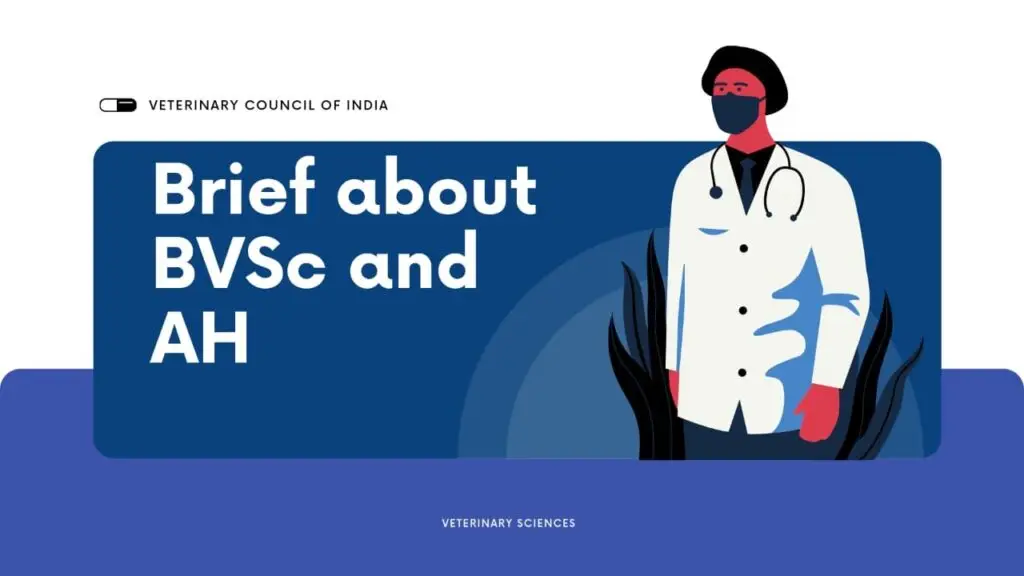Understanding the NAVLE Exam

The NAVLE (North American Veterinary Licensing Examination) is an essential milestone for veterinary professionals seeking licensure in the United States and Canada. This section delves into what the NAVLE exam entails and its overarching purpose.
North American Veterinary Licensing Examination
The North American Veterinary Licensing Examination (NAVLE) has been a requirement since 2000 for all aspiring veterinarians to secure their licenses in the US and Canada (ICVA). Administered by the International Council for Veterinary Assessment (ICVA), the NAVLE consists of 360 clinically relevant multiple-choice questions. It is offered during two testing windows each year, in November-December and April.
| NAVLE Facts | Details |
|---|---|
| Total Questions | 360 Multiple-Choice Questions |
| Exam Frequency | Twice Annually (Nov-Dec, April) |
| Administered By | ICVA |
| Required For | Licensure in the US and Canada |
Purpose and Overview
The NAVLE exam serves multiple crucial purposes. It is designed to ensure that candidates possess the needed knowledge and clinical skills to practice veterinary medicine safely and effectively. By assessing a broad spectrum of veterinary knowledge, the NAVLE helps maintain high standards within the profession across different jurisdictions (ICVA).
For veterinary students and professionals, understanding the importance of the NAVLE and how it fits into the broader licensure pathway is essential. Successfully passing the NAVLE is a significant step in becoming a licensed veterinarian and is often seen as a rite of passage in veterinary medicine.
NAVLE Application Process
Aspiring veterinarians must successfully navigate the NAVLE application process to practice veterinary medicine in North America. Here, we break down the steps and important deadlines to help candidates prepare effectively.
Applying for the Exam
The North American Veterinary Licensing Examination (NAVLE) application process is outlined on the ICVA website. Candidates must follow these steps:
- Application Submission: Submit the NAVLE application directly to the ICVA by the specified deadlines. Candidates must ensure that all information is accurate and complete to avoid delays.
- Board Approval: Some candidates may require approval from their respective state or provincial board before submitting their application to the ICVA. Check with your local veterinary licensing board for specific requirements.
- ICVA Submission: For those seeking licensure in Canada, applications should be sent to the Canadian National Examining Board.
- Marking ICVA as Agency: If uncertain of where to practice, candidates have the option to mark ICVA as their application agency. This ensures that NAVLE scores are not sent to any licensing board.
Important Dates and Deadlines
Meeting deadlines is crucial for the NAVLE application process. Here are the important dates:
| Testing Window | Application Receipt Deadline |
|---|---|
| November–December | August 1 |
| April | February 1 |
Candidates must ensure that their applications are received by these dates to be eligible for their desired testing period.
Understanding and adhering to these steps and deadlines will help candidates smoothly navigate the NAVLE application process.
Prep Resources for NAVLE
To excel in the North American Veterinary Licensing Examination (NAVLE), it’s crucial to have access to reliable and comprehensive prep resources. This section explores two key resources: review courses and materials, and the VetPrep Certification Program.
Review Courses and Materials
A variety of review courses and prep materials are available to help veterinary doctors prepare for the NAVLE. These resources are designed to cover the broad scope of topics in the exam, offering practice questions, study guides, and interactive content.
- Books and Study Guides: Comprehensive review books and study guides offer structured content that mirrors the NAVLE syllabus.
- Online Courses: Wise IAS provide flexible and convenient options, allowing candidates to access materials anytime.
- Practice Exams: Simulated exams help familiarize candidates with the question format and time constraints of the NAVLE.
These resources and tools are key to ensuring success in the NAVLE exam, providing thorough preparation and instilling confidence in candidates.
NAVLE Exam Structure
The North American Veterinary Licensing Examination (NAVLE) is a crucial step for aspiring veterinarians seeking licensure in the United States and Canada. Understanding the exam structure, including question types, format, scoring, and passing requirements, is essential for successful preparation and performance.
Question Types and Format
The NAVLE is designed to assess a candidate’s competency in veterinary practice through a comprehensive set of questions. Administered by the International Council for Veterinary Assessment (ICVA), the exam consists of a total of 360 multiple-choice questions. These questions are divided into six sections, each containing 60 questions. Of these, 60 questions are “pre-test” questions that do not contribute to the final score but are included to evaluate their effectiveness for future exams (Ross University School of Veterinary Medicine).
| Section | Number of Questions | Scored Questions | Pre-test Questions |
|---|---|---|---|
| 1 | 60 | 50 | 10 |
| 2 | 60 | 50 | 10 |
| 3 | 60 | 50 | 10 |
| 4 | 60 | 50 | 10 |
| 5 | 60 | 50 | 10 |
| 6 | 60 | 50 | 10 |
| Total | 360 | 300 | 60 |
The NAVLE is designed to be completed within one day. The exam is structured to evaluate various aspects of veterinary medicine, with an emphasis on clinical diagnoses. The multiple-choice questions cover a wide range of topics, ensuring a thorough assessment of a candidate’s knowledge and skills.
Scoring and Passing Requirements
The NAVLE scoring system ranges from 200 to 800 points. The passing score is typically set at 425 points. Scoring is based on the 300 scored questions, while the 60 pre-test questions do not impact the final score. The scoring targets for each category are determined by the ICVA’s most recent Practice Analysis, which is updated regularly to reflect current knowledge and trends in veterinary medicine.
| Category | Score Range | Passing Score |
|---|---|---|
| Scored Items | 200 – 800 | 425 |
Candidates must achieve the passing score of 425 to be eligible for licensure. The NAVLE is offered twice a year, during April and November/December, allowing candidates to choose a testing window that best fits their schedule.
Exam Duration and Breaks
The NAVLE is a comprehensive examination that tests the knowledge and skills critical for veterinary practice. The exam duration is approximately 7.5 hours, including breaks. Candidates are advised to be prepared for a long testing day and plan accordingly.
The exam is divided into timed sections, with a total of 360 multiple-choice questions. The exam day typically includes a 15-minute introductory tutorial, followed by six 60-minute blocks of 60 questions each. There is also a 45-minute optional break period that can be taken in chunks or all at once between exam blocks.
A typical NAVLE exam day schedule might look like this:
| Activity | Duration |
|---|---|
| Tutorial/Intro | 15 minutes |
| Exam Block 1 | 60 minutes |
| Exam Block 2 | 60 minutes |
| Break (Optional) | 45 minutes (cumulative) |
| Exam Block 3 | 60 minutes |
| Exam Block 4 | 60 minutes |
| Exam Block 5 | 60 minutes |
| Exam Block 6 | 60 minutes |
To perform well, it’s crucial for candidates to manage their time effectively and utilize breaks wisely to stay refreshed.
Costs and Retake Policies
Exam Fees and International Charges
Understanding the costs associated with the NAVLE is crucial for aspiring veterinary doctors. For the 2023-2024 testing cycle, the cost to take the NAVLE is $740 USD. Additionally, there is an extra fee of $355 for international students who wish to take the exam.
| Testing Cycle | Exam Fee (USD) | Additional Fee for International Students (USD) |
|---|---|---|
| 2023-2024 | $740 | $355 |
| 2021-2022 | $705 | Not specified |
It is important for students, particularly those considering bvsc & ah, to budget accordingly for these expenses as part of their exam preparation.
Retake Allowances and Regulations
For those who do not pass the NAVLE on their first attempt, there are specific retake policies in place. Test-takers are permitted to retake the NAVLE up to five times within a five-year period following their initial attempt (Inspira Advantage). However, candidates are only allowed to take the exam once per testing cycle. Approval from the board may be required for any additional attempts beyond the initial five tries.
| Retake Policy | Details |
|---|---|
| Maximum Retakes | Up to 5 times in five years |
| Frequency | Once per testing cycle |
| Board Approval | Required after five attempts |
These retake allowances provide students with additional opportunities to succeed while maintaining a structured approach to ensure exam readiness and competence. For further guidance and support, students can explore more resources related to vlda course details in hindi.
NAVLE Content Overview
The NAVLE exam is designed to test the knowledge and clinical skills of veterinary students, ensuring they are prepared to practice in a real-world setting. This section will provide an overview of the content covered in the exam, as well as the emphasis on clinical diagnoses.
Topics Covered in the Exam
The NAVLE exam encompasses a broad range of topics, all crucial for veterinary practice. According to the ICVA, the exam content is grouped by species and organ system within species, with similar species analyzed together. This ensures that examinees have a comprehensive understanding of various animal species and their common health issues.
Approximately half of the exam questions relate to dogs and cats, highlighting the importance of focusing studies on these commonly encountered scenarios in veterinary practice. Here’s a breakdown of the distribution of questions based on species:
| Species | Approximate % of Exam |
|---|---|
| Dogs and Cats | 50% |
| Equine | 15% |
| Food Animals (Cattle, Pigs, Sheep) | 15% |
| Exotic Animals (Birds, Small Mammals) | 5% |
| Mixed/Other Species | 15% |
Source: Ross University School of Veterinary Medicine
Emphasis on Clinical Diagnoses
The NAVLE places a significant emphasis on clinical diagnoses to simulate real-world veterinary scenarios. Clinical diagnoses in NAVLE are categorized by species and further divided by organ systems within those species. This structure ensures that veterinary professionals possess the necessary diagnostic skills across different animal types.
For example, candidates might encounter questions requiring them to identify and diagnose conditions within the respiratory system of a horse or the gastrointestinal issues of a dog. This focus on clinical diagnoses tests an individual’s ability to apply theoretical knowledge to practical situations.
Key areas of clinical focus in the exam include:
- Diagnostic procedures and interpretation
- Therapeutics and treatment planning
- Preventive healthcare
- Surgery techniques
- Emergency and critical care
NAVLE and Licensing
Understanding the intricacies of the NAVLE is essential for veterinarians planning to practice in the United States and Canada. After passing the North American Veterinary Licensing Examination (NAVLE), there are specific steps to follow to obtain licensure and ensure that the scores are correctly reported.
Licensure Procedures and Next Steps
After successfully passing the NAVLE, candidates must follow certain licensure procedures, which are critical for practicing veterinary medicine in their desired regions. The NAVLE is a requirement for licensure in all US and Canadian jurisdictions (ICVA).
Step-by-Step Licensure Process:
- Complete NAVLE: Ensure you have successfully completed the NAVLE.
- Submit Application: Apply for licensure in the specific state or province where you intend to practice. The process may vary between different jurisdictions.
- Provide Proof of Education: Submit documentation verifying completion of an accredited veterinary program.
- Complete Additional Requirements: Depending on the location, you may need to fulfill other requirements such as jurisprudence exams or additional certifications.
- License Issuance: Once all steps are completed, the licensing board will issue your veterinary license.
For those planning to practice in more than one state or are unsure of their practice location, using the AAVSB after graduating and passing the NAVLE is advisable.
Receiving and Reporting Scores
The scores from the NAVLE are crucial and need to be reported accurately to the relevant licensing bodies.
Score Reporting Process:
- Results Notification: Candidates typically receive their NAVLE results within four weeks after the end of the testing window.
- Score Availability: Scores are made available online through the ICVA portal.
- Reporting to Jurisdictions: The ICVA will send the scores directly to the licensing board(s) indicated in the candidate’s application. Ensure the correct jurisdiction is selected to avoid delays.
Properly navigating the licensure process and ensuring that scores are correctly reported are vital steps toward reaching new heights in veterinary practice.






Responses